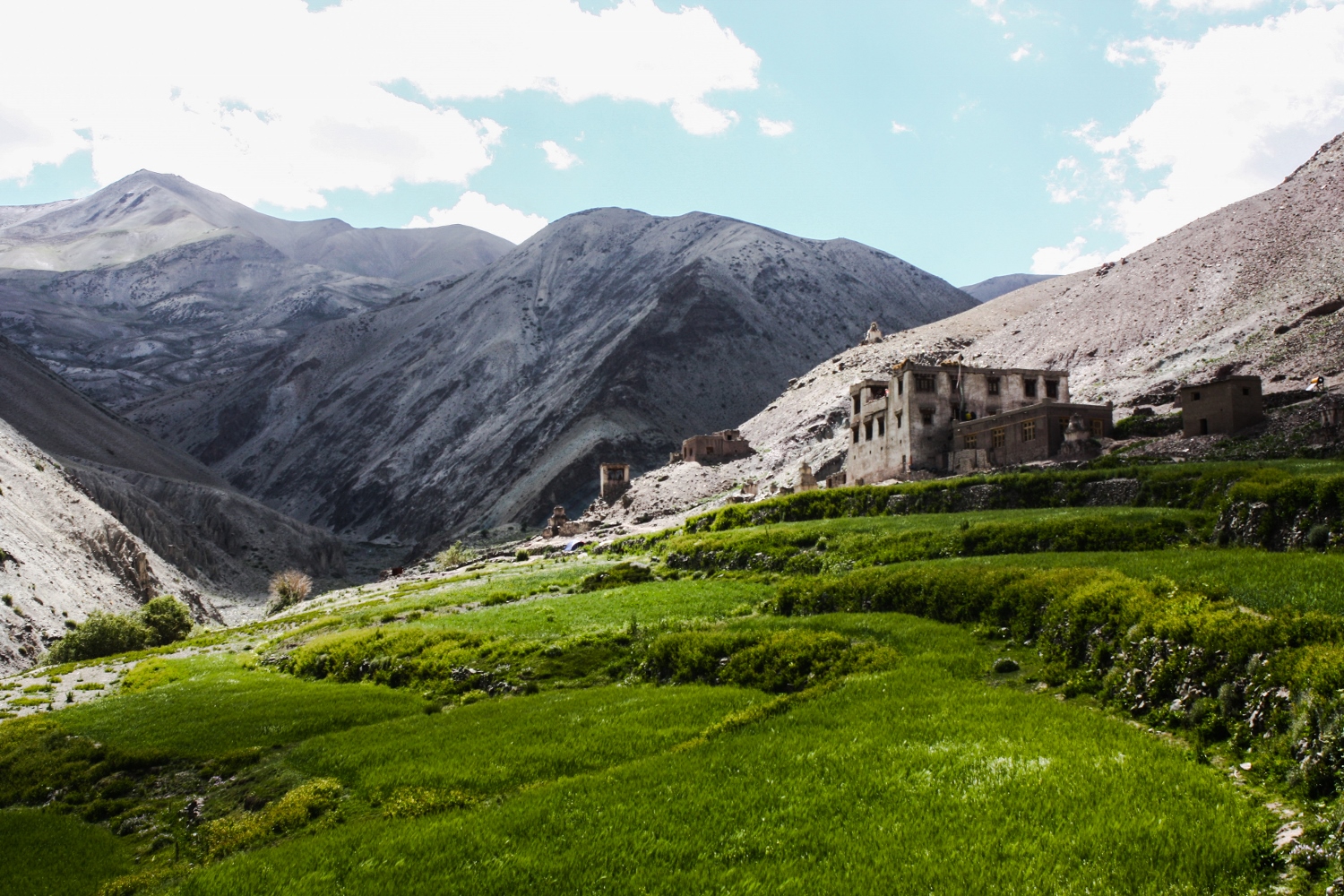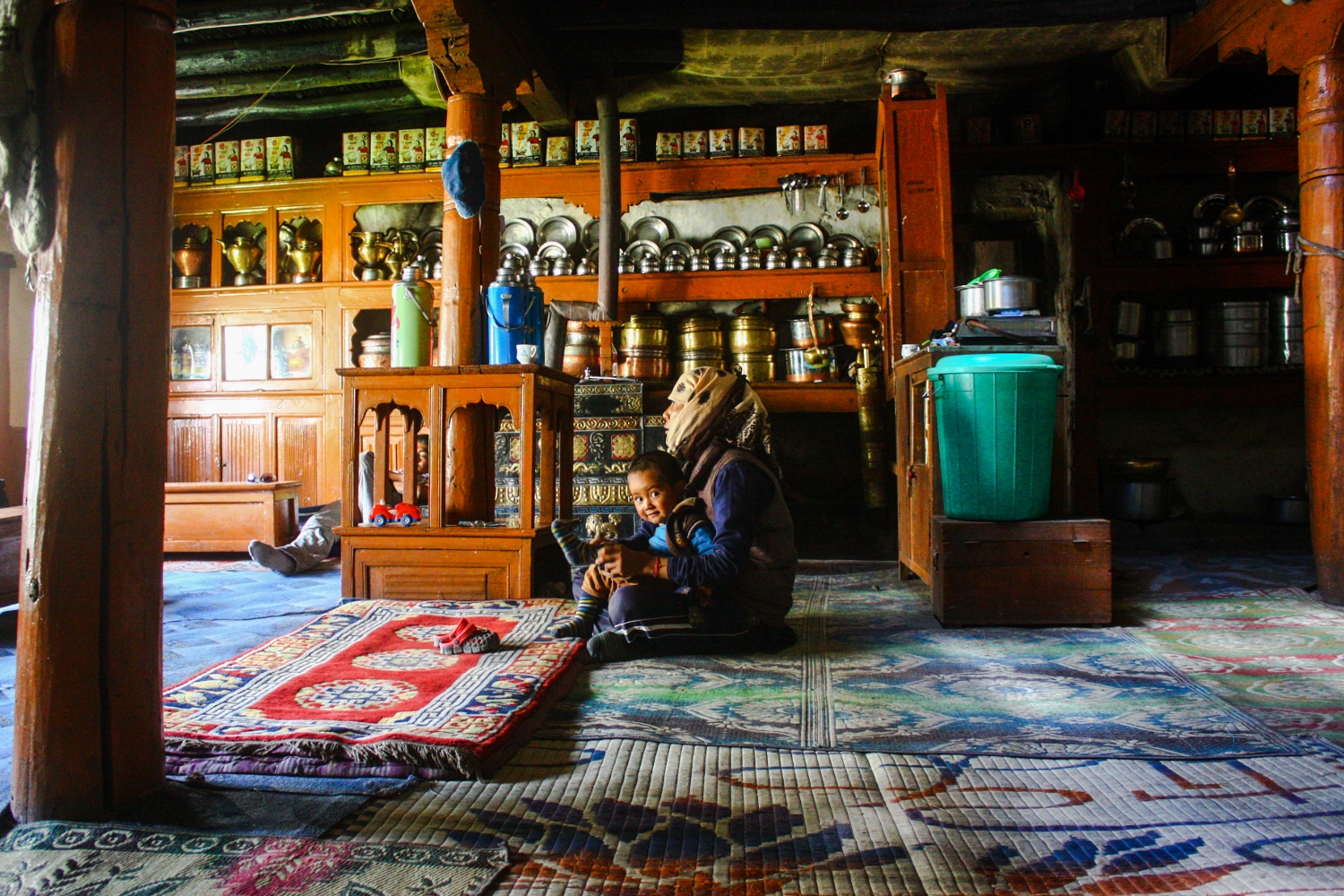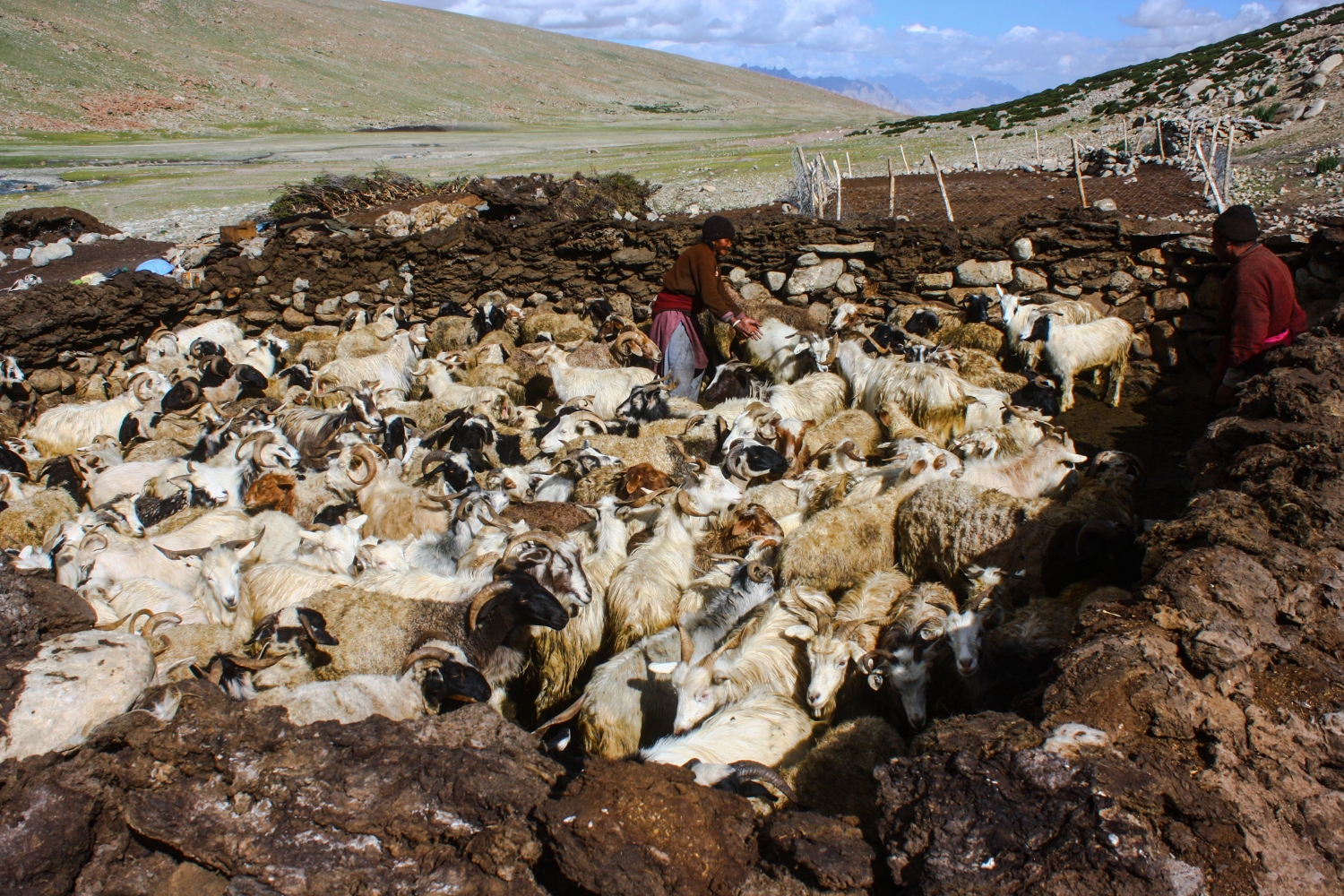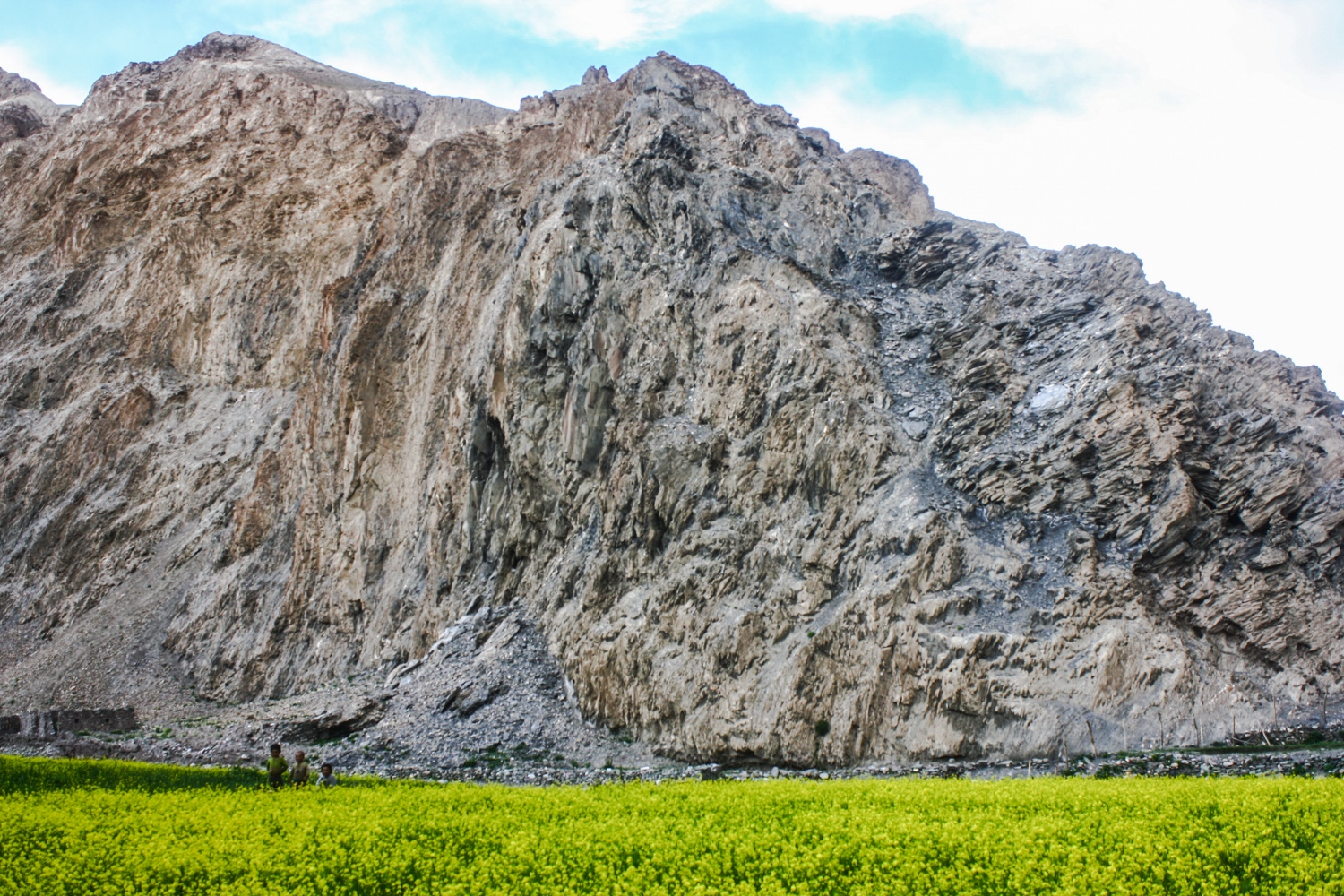
Ladakh, which is in the very north-east corner of India, part of the state of Kashmir and borders China and Nepal, used to be a sustainable land, where everyone was happy and people really lived off the land. For centuries Ladakhis have prospered in one of the most extreme landscapes on earth.
The traditional Ladakhi houses were built big and comfortable, because they had to hold 3 to 4 generations under one roof.


People had plenty of food and water, cattle and crop, but most importantly they had a community that cared for everyone. Ladakhi’s lived in a sustainable way. Trash was unheard of and everything came from nature and everything went back to nature. Everyone helped each other if someone was in need, and when there came a problem the elders would have a meeting and try to solve it before it got any worse. There was no use of money, because people shared and bartered labor and goods. The family that asked for help or food would always be ready to repay the family that helped. The village animals would be taken out everyday by one person of the whole village and the next day someone else would do the job. This way the work was shared by all. At the end of harvest each family would have enough food to last them the whole winter and most years even enough extra to trade for salt, sugar and other goods. All of the Ladakhis work was done with leisure and because the work was shared they would have time to talk, laugh and enjoy the day.

The problem nowadays is that with the coming of modern ways, through tourism and television, the people of Ladakh are feeling poor in comparison to the tourists and the people on TV. Popular world culture sends a message that there is not a care in the world in the West. In really this isn’t true, because there is more worry in the West than there is in a Ladakhi traditional life. But today the Ladakhis strive to be like the tourists and because of that they think more and more that they are poor. Their self worth is low. They think they are not as pretty, as happy or as rich as all these people coming from abroad.
The other problems with the comings of modern ways is all the pollution. Now a lot of Ladakhis have moved to the capital, Leh, and they rely mostly on trucks to bring their food and supplies like clothing, water (although there are pumps and streams in Leh) and many more consumer goods. The trucks create fumes that pollute the air and the things that they bring create trash that is piled up in a dump outside town. The dump is positioned in a valley bellow a village, so when there is a storm all of the trash is blown into the village. The village complained and the dump was moved.
Because the roads to Ladakh are only open for 3 months of the year (June to September), the food stored for the winter is usually depleted before the roads open again the following year. Nobody buys the local wheat because the wheat brought in the trucks is much cheaper, so the locals farmers are out of business. But the market changes – one year one kilo of flour might be three rupees and the next six! People are dependent of whatever price the government sets. Another problem is the water. Because of all the pollution all the water from the streams is not fit to drink. This puts a stress on the ground water supply which might run out any moment. Also in Leh most Ladakhis live far away from any pump or stream an rely on government trucks to supply them with water, hence adding to the pollution. Plus a lot of new hotels are being built and all of them have flush toilets that use a lot of water!
What can visitors to Leh, like us do to help? Well, you could start with trying to make your consumption of water less, by staying in guest houses that use dry toilets and taking bucket showers. There are several Ladakhi owned shoppes in Leh that sell filtered water and locally made products such as apricot jam and dried fruits. You could refill your water bottle there, that would help with the plastic bottle problem it would also support the local economy. Though there is little we can do these little steps will at least help a little bit.
But don’t worry to much because Leh and Ladakh have a lot of NGOs working to help them solve their problems!
Boryan

Thanks for all good information about Ladakh & Leh, Boryan! Your writing flows well and is interesting to read.
Hi, We would like to use your photographs of Ladakh for publication in a magazine. Please get in touch urgently. Looking forward to hearing from you!
Best regards